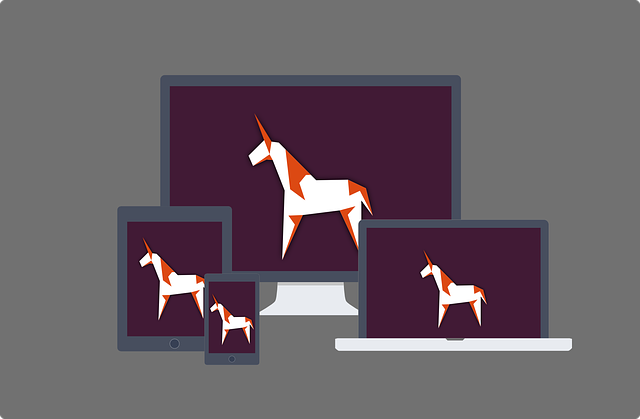Category: NixOS
# NixOS: Unleashing the Power of Functional Package Management
If you’re tired of configuring and maintaining your operating system, constantly battling with updates and package dependencies, then you need to hear about NixOS. This powerful and unique operating system is based on functional package management, allowing for a more streamlined and hassle-free approach to system management. In this article, we will dive into the world of NixOS, exploring its features, advantages, and potential use cases. So sit back, relax, and discover the power of NixOS.
## What is NixOS?
NixOS is a Linux distribution built from the ground up, with a focus on functional package management. This means that all system components, including the base operating system, packages, and configurations, are treated as immutable and reproducible units. Unlike traditional package managers, which often lead to dependency issues and conflicts, NixOS uses a functional language called Nix to describe and manage software packages. This approach ensures the system remains stable, regardless of updates or package installations.
## Why Choose NixOS?
So why choose NixOS over traditional Linux distributions? One of the major advantages is its reproducible and declarative nature. With traditional package managers, when you install a package, you are not guaranteed the same outcome on another system with the same package. NixOS, on the other hand, ensures that each package has its own isolated environment, preventing any conflicts or changes from affecting the rest of the system.
Additionally, NixOS allows for easy system rollback. In case of a failed update or a package causing issues, you can easily revert the system back to a previous state. This can be a lifesaver in a production environment where downtime is not an option.
## How Does it Work?
NixOS operates on a purely functional model, where all packages are defined as functions in the Nix language. These functions take in the current state of the system and return a new state, ensuring that each package is built and installed in a consistent and isolated environment.
The central component of NixOS is the Nix package manager, which is responsible for building and installing packages, as well as managing package dependencies. Nix ensures that each package is stored in its own unique directory, preventing conflicts and making it easy to uninstall packages without leaving any remnants.
## Use Cases
NixOS is a versatile operating system that can be used in various scenarios. Its functional package management approach makes it suitable for both personal and professional use cases.
In development environments, NixOS allows for easy and consistent development setups. Each project can have its own isolated environment, ensuring that dependencies are met and conflicts are avoided. This also makes setting up development environments on new machines a breeze.
For system administrators, NixOS offers a more streamlined approach to managing servers. Its declarative nature and easy rollback make it a great choice for production environments.
## Getting Started with NixOS
So how do you get started with NixOS? The best way is to try it out in a virtual machine or on a spare computer. You can download the ISO image from the official NixOS website and follow the installation guide. The installation may be a bit different from traditional Linux distributions, but the effort will be worth it once you experience the power of NixOS.
## The NixOS Community
One of the greatest strengths of NixOS is its community. With its functional and reproducible approach, the community is constantly sharing and updating packages, making them available for others to use. The community is also very welcoming and helpful, making it easy for newcomers to get started and ask for help when needed.
## NixOS vs Other Functional Package Managers
You may be wondering how NixOS compares to other functional package managers, such as GuixSD or GNU/Linux. While they have similar principles, NixOS stands out for its declarative and reproducible nature. Additionally, NixOS has a larger community and user base, making it more widely supported.
## Is NixOS Right for Me?
With all its unique features and advantages, NixOS may seem like the perfect choice for your next operating system. However, it is important to note that NixOS may not be suitable for everyone. Its purely functional model may require a learning curve for those used to traditional package managers. Additionally, NixOS may not have all the packages and applications you need, so it is important to research and test before making the switch.
## Conclusion
NixOS offers a refreshing and innovative take on operating systems, with its functional package management approach. Its declarative nature and easy rollback make it a great choice for both personal and professional use cases. So why not give it a try and experience the power of NixOS for yourself?
## FAQs
Q: Can NixOS be used on any hardware?
A: Yes, NixOS can be installed and used on any hardware that is capable of running Linux.
Q: Is NixOS difficult to learn?
A: It may require some effort to understand the functional and declarative concepts of NixOS, but the community and documentation are very helpful.
Q: Are there any drawbacks to using NixOS?
A: NixOS may not have all the packages and applications you need, and may require some adjustments for those used to traditional package managers.
Q: Does NixOS have a graphical user interface?
A: Yes, NixOS has a desktop edition with the KDE Plasma desktop environment, as well as the option to install other desktop environments.
Q: Can I customize my NixOS configuration
NixOS Linux Lets You Configure Your OS Before Installing – Linux.com
I’ve been using Linux for a very long time. Over the years, I’ve been incredibly happy with how the open source landscape has evolved…….
6 Reasons Why You Should Consider Using NixOS Linux – It’s FOSS
NixOS… Yet another distro that uses a different package manager? 🤯Well, NixOS is one of the advanced Linux distros. So if I’m writing this, I mu…….




















